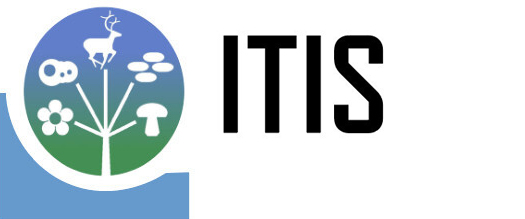
Integrated Taxonomic Information System - Data Development History
The Integrated Taxonomic Information System (ITIS) was formally established on February 27, 1996, the date that the first six agencies completed signing the ITIS MOU, agreeing to support a cooperative project to develop, scientifically review, improve, and maintain a taxonomic information system. The data used to initialize the ITIS database have an even older origin. The earliest progenitor of ITIS data was the Taxonomic Code for the Biota of Chesapeake Bay (Schwarz et al., 1972), one of the first digitized taxonomic information systems. Other projects, inspired by this work, began creating taxonomic information systems with their own distinct identification codes. But having to manage biological data with disparate identifiers became too inefficient. To harmonize identifiers in a single system the National Oceanographic Data Center (NODC) created a framework to assign numeric taxonomic codes to all taxa, and the first edition of the NODC Taxonomic Code was published in 1977. The NODC system antedated modern relational database management systems (RDMS). To leverage the ability of commercially available databases to search, retrieve, and execute transactions against data, NODC version 8 was migrated to initialize the ITIS database with 208,458 scientific names on June 13, 1996. Each name was assigned a Taxonomic Serial Number - a unique, persistent, non-intelligent identifier for a scientific name in the context of the Integrated Taxonomic Information System (ITIS).
The ITIS mission is to provide a taxonomy of global species, enabling clear communication about the world's biota and connect biodiversity data to accelerate discovery across all human endeavors. Within this framework, the initial data content development and quality assurance strategy was to begin with the NODC data and proceed on two tracks: (1) adding new names or checklists with a high level of taxonomic credibility, and (2) reviewing and verifying the legacy NODC data, thereby bringing it to a minimal, or higher, standard of data quality. Pending review and improvement, the unverified legacy data have been retained in the ITIS database to meet the needs of ITIS partners and cooperators who use the names and their associated TSNs in biological data management systems. Since the 1996 import of the legacy dataset, ITIS has grown to nearly more than 987,000 scientific names, more than 91% of which have been verified in the literature, leaving about 87,000 names as unverified legacy data. [1]
The names added to ITIS receive a Record Credibility Rating of Verified Standards Met or Verified Minimum Standards Met. The legacy NODC data which haven't been verified yet have a Record Credibility Rating of Unverified.
If you would like to partner with ITIS you can contribute to a growing source of global species using the Taxonomic Workbench. Our Data Development Specialists are here to help you enter, review, and update data in ITIS for distribution across the world.
